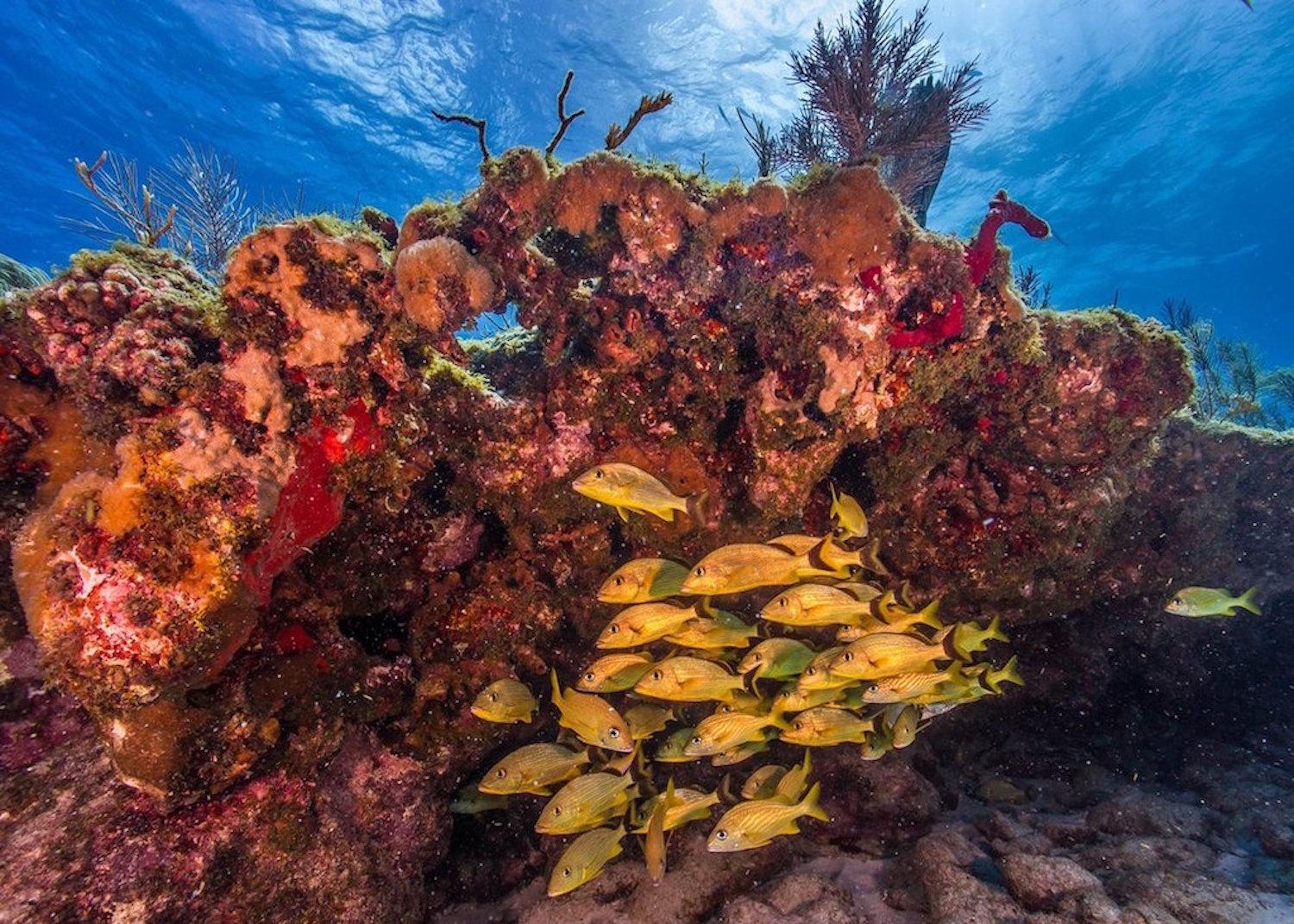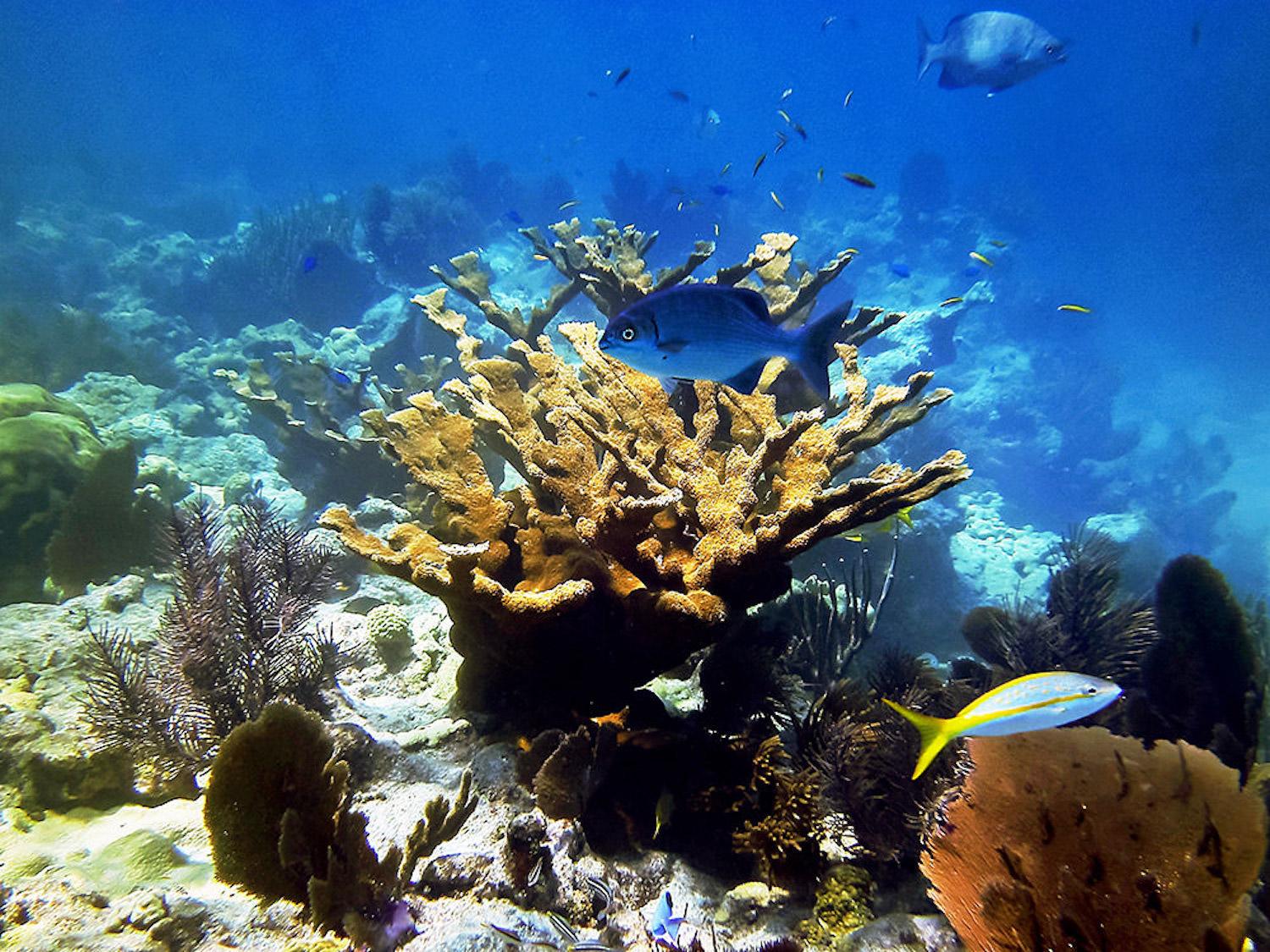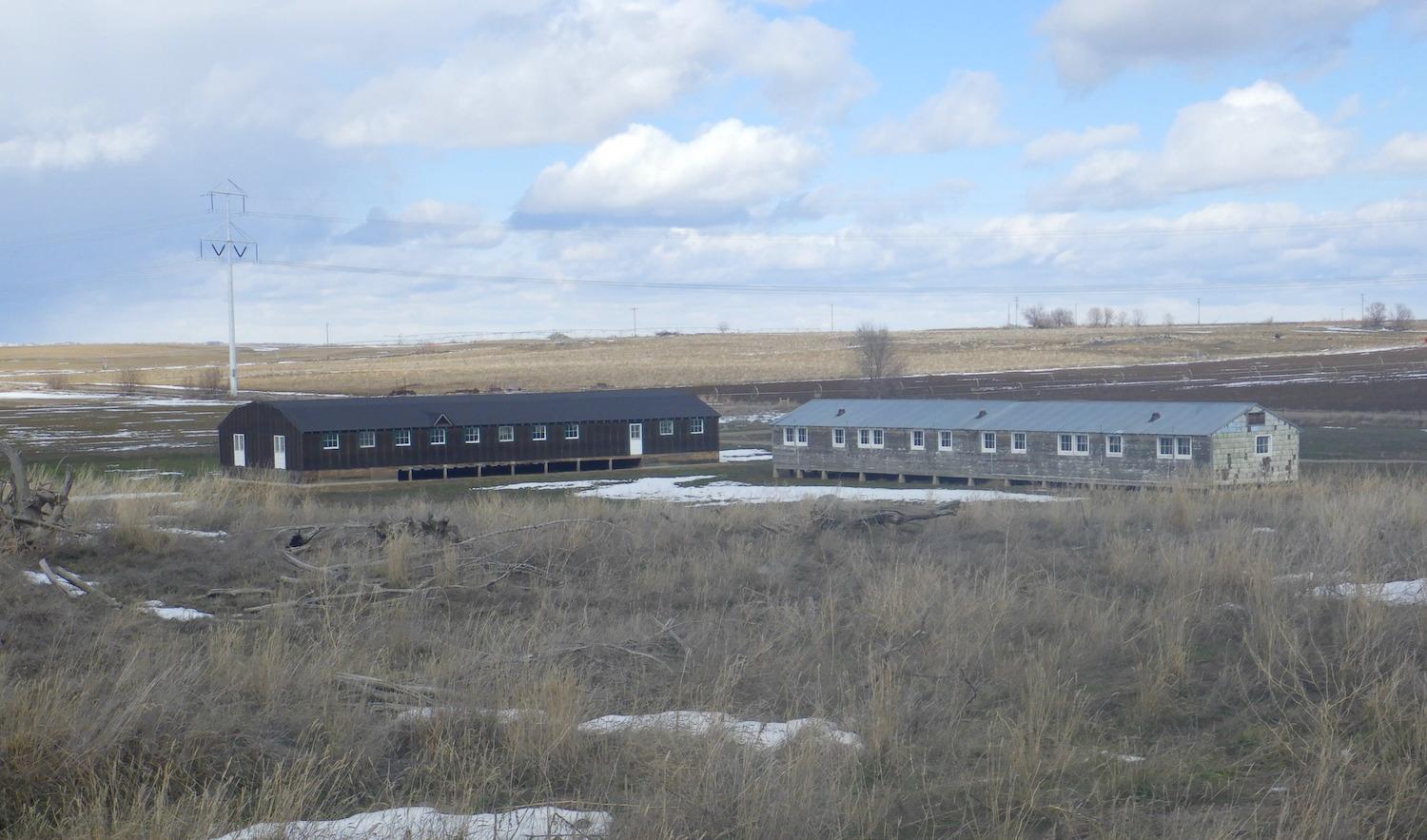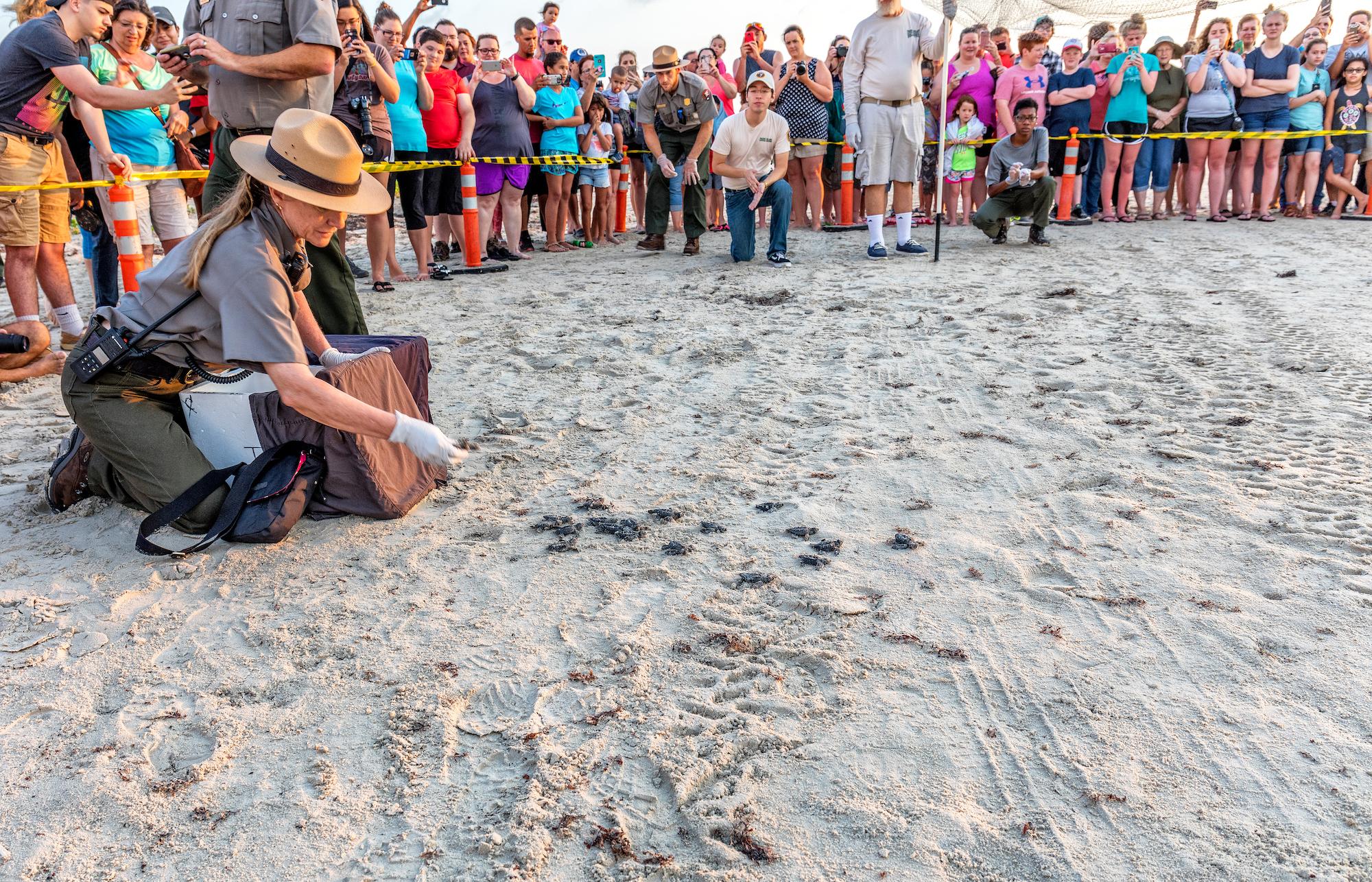
Politics twice in recent years have hindered Biscayne National Park's efforts to protect its marine life and coral reefs/NPS
Traveler's View: All Is Not Well With The National Park System
By Kurt Repanshek
Editor's note: This corrects that National Park Foundation figures were for Fiscal 2019, which runs from October 1, 2018, through September 2019, and that expenses were for program services, not total expenses.
National Park Week is a great time to celebrate and enjoy the National Park System, but it’s also a time to assess the state of the 423 units of that system, and there’s much to be concerned about.
Politics, insufficient funding, questionable priorities, climate change, invasive species, and overcrowding all are chipping away at what long has been referred to as America's Best Idea, an increasingly trite phrase that fails to recognize the challenges faced by the National Park Service as it strives to live up to its 1916 mandate to "conserve the scenery and the natural and historic objects and the wild life therein..."
Indeed, for three years now the National Parks Traveler has issued its year-end list of Threatened and Endangered Parks, and not one park has been removed.
Here's a glance at some of the issues:
Politics
Politics for decades, quite frankly, have hampered the Park Service from following its mandate under the National Park Service Organic Act of 1916.
Recently they've shot down some efforts to protect wildlife at national parks in Florida. Efforts at Biscayne National Park to preserve a small percentage of the marine park and just 2,663 acres of the park's precious coral reefs died in 2016 under political pressure. On top of that, a new study warns that overfishing in Florida's marine waters is pushing fisheries that touch Biscayne, Dry Tortugas, and Everglades national parks towards an ecological calamity. Florida politicians disagree.

The fisheries that touch Biscayne, Dry Tortugas, and Everglades national park are being overfished, according to researchers, but Florida officials disagree/NOAA
There's also the curious Park Service stance at Point Reyes National Seashore when it comes to seemingly valuing cattle more than native Tule elk (see Internal Priorities below). Might U.S. Sen. Dianne Feinstein, who lost in her effort to save the Drakes Bay Oyster Co. from being pushed out of the national seashore, now be working behind the scenes to protect the livestock interests?
Politics also are impeding parks such as Zion, Bryce Canyon, and Arches in Utah, and, no doubt, Yellowstone, Grand Canyon, and Great Smoky Mountains, just to name six, from taking a hard stand against overcrowding that is damaging park resources, straining staff, and impacting the national park experience. Utah's congressional delegation has gone on record opposing a reservation system at Zion, and the Tennessee Legislature for decades has refused to retract a stipulation concerning the Newfound Gap Road across Great Smoky that prevents the Park Service from charging an entrance fee.
Of course, politics ruled and roiled the Park Service during the Trump administration, when then-Interior Secretary David Bernhardt not only ran roughshod over long-accepted regulations and practices, but forced out more than a few senior park managers and worked to replace them with political appointees.
Funding and Staffing
Congress is great when it comes to designating additional units to the system, but terribly disappointing when it comes to adequately providing the Park Service with the tools (e.g., staffing and funding) to properly maintain and protect the parks.
In recent weeks we’ve seen that a lack of NPS presence led to visitors at Cape Lookout National Seashore take a newborn foal they thought was abandoned to park headquarters, off-road driving and vandalism at San Juan Island National Historical Park, and the head of an iconic bull elk at Rocky Mountain National Park carted off (it was later found).
Adequate funding that would enable parks to take care of their natural, cultural, and historic resources also would negate the need for steadily increasing, and at times creatively proposed, fees. After all, it's a lack of base funding that has superintendents at Great Smoky Mountains National Park and Chickasaw National Recreation Area proposing fees to simply park your vehicle, and it now costs groups to reserve a playing field on the National Mall to generate revenues "for the continued care and upkeep of the fields."
Camping fees are, of course, making their annual increase in some parts of the park system.
Many units of the park system are also struggling to do exactly what the National Park Service Organic Act mandates the Park Service to do when it comes to preserving history because they lack the resources.

Minidoka National Historic Site needs an influx of dollars to properly interpret the dark history that was recorded here/Kurt Repanshek
Last month President Biden signed legislation to establish Amache National Historic Site as the 424th unit of the park system (a numerical designation on hold, at least, until land is acquired for the site). Amache's significance is as one of 10 incarceration sites established by the War Relocation Authority during World War II to detain Japanese Americans forcibly removed from the West Coast of the United States under the terms of Executive Order 9066.
But will Amache escape the fate of Minidoka National Historic Site in Idaho? Added to the National Park System in 2001, Minidoka also was established to preserve a chapter of Japanese American incarceration during World War II. Two decades later, the Park Service lacks the fiscal resources to not only adequately staff the site – the visitor center is closed in winter – but to properly interpret the dark history written at Minidoka.
Aside from the visitor center and Fire Station No. 1 near the center, there are just two empty buildings to look at -– a barracks and a mess hall -- out of the hundreds that once stood here. There are no exhibits to place you in the incarcerees’ prison setting, no evidence of the more than 100 acres of garden plots where the incarcerees grew their own food, or the hog or poultry farms. The 50-foot-wide by 200-foot-long root cellar they built to store produce is in a state of gradual collapse with no current plans to save it.
Even if there was a plan, the Park Service couldn't afford it because of lack of funding. For Fiscal Year 2021, Congress provided $488,000 for Minidoka, a budget that doesn't allow for year-round staffing or much more than maintaining the grounds in their current state. In his FY2022 budget proposal, President Biden called for a $210,000 increase for the site; Congress provided a $12,000 bump.
The Medgar and Myrlie Evers Home National Monument was added to the park system in 2019. It has yet to open to the public. There is no visitor center, and as writer Lori Sonken pointed out, the 66-year-old house also needs a new foundation and driveway. The rust-bearing windows demand repair or replacement. An environmental assessment, general management plan, and long-range interpretive plan must be conducted, Sonken noted. Depending on the outcome of studies addressing historic structures, foundations, furnishings, and load bearing, additional work may be necessary. All this requires funding – at least $750,000 -- but when it will be provided is uncertain.
Where might funding come from, if not Congress or ever-increasing visitor fees? The National Park Foundation, chartered by Congress to raise funds to help the Park Service manage the system, in Fiscal 2019, which runs from October 1, 2018, through September 2019, had total assets of $253.4 million. With total program expenses for its mission that year amounting to just $37.8 million, it would seem the Foundation has the financial wherewithal to help Minidoka, the Evers’ home, and more than a few other units of the park system that are struggling. There might even be plenty left so Great Smoky Mountains Superintendent Cassius Cash wouldn’t be looking to charge you to park.
The hitch, though, seems to be a setting of priorities by the Park Service.
“Working in alignment with National Park Service priorities they set, we identify things we can raise money for,” through individual donors, foundations, and corporations, Will Shafroth, the foundation's president and CEO, told Sonken for her story.
Interior Secretary Deb Haaland and National Park Service Director Chuck Sams, who both sit on the Foundation's board as ex-officio directors, perhaps should attach some priorities to those millions of dollars.
Not to be ignored is the plight of Park Service seasonal workers, and even full-time staff, as they go in search of affordable housing. As the Traveler pointed out in November, the lack of affordable housing, the lack of housing to meet staffing needs, and the lack of funding to replace dilapidated housing is reaching a crisis level at many areas of the National Park System. Not only has Rocky Mountain National Park lost some prospective employees because of the poor housing situation, but both Voyageurs National Park and Indiana Dunes National Park have had to reach out to their surrounding communities for affordable housing for seasonal workers.
Better pay wouldn't hurt, either. Sunsets are nice, but they don't put food on the table or pay the utility bills.
Internal Priorities
There are internal issues within the Park Service that are puzzling.
Why is the National Park Service at Point Reyes National Seashore willing to sacrifice native Tule elk to appease livestock ranchers? Back in January a lawsuit filed in federal court in California challenged the Park Service's plan for managing agriculture and wildlife at Point Reyes. At the heart of the filing is a claim that the Park Service is embracing cattle ranches to the detriment of native Tule elk in the seashore.
The Park Service has "prioritized the commercial needs of ranchers instead of providing maximum protection to the natural environment and supporting the public’s use and enjoyment of these majestic lands along the California coast," argues the lawsuit, filed by the Resource Renewal Institute, Center for Biological Diversity, and Western Watersheds Project.
Also curious is why the Park Service at Padre Island National Seashore silenced Dr. Donna Shaver, arguably the country’s preeminent sea turtle expert when it comes to the most endangered turtle, the Kemp’s ridley, and decided other threatened and endangered sea turtles that use the seashore’s beaches don’t merit equal protection.
As we noted last year, the Park Service recruited Dr. Shaver -- a sea turtle biologist whose Student Conservation Association intern stint at Padre Island in 1980 launched a career that took her from the Park Service to former Interior Secretary Bruce Babbitt's short-lived National Biological Survey and back to the Park Service at Padre Island in 2003 -- to build that sea turtle science program, a role that saw her lift it to international prominence. But more recently the agency appears to be squandering her success and hoping she'll retire.
The public explanation for moving Dr. Shaver out of the way is that her program's funding is unsustainable and the program she has built needs to be reined in. That despite the fact that she has a fairly good track record of raising funds, bringing in more than $14 million in outside dollars since 1994.
Once upon a time it was easy to interview Dr. Shaver about her work and the fate of Kemp's ridley turtles. Today she's not allowed to speak to the media, and Intermountain Region Director Michael Reynolds also has declined interview requests.

Dr. Donna Shaver, releasing hatchlings in 2017, raised public interest in sea turtles and conservation through hatchling release events/Rebecca Latson
Overcrowding
There are more than enough units within the National Park System -- 423 -- to deal with overcrowding, but convincing the park-going public to spread out is an ongoing challenge.
Director Sams is aware of the crowding problem, and he recently urging visitors to go beyond 25 park units that in 2021 saw roughly half of the 297 million visits the park system recorded last year. But as far as we know, he hasn’t directed the most crowded parks to take any specific action.
So far there has been a piecemeal approach to the problem. Zion has instituted a permit system for hiking to the top of Angels Landing, while Arches has joined Glacier and Rocky Mountain national parks in requiring reservations to enter. Yosemite National Park also will be using reservations this year between May 20 and September 30 to control numbers, but only because "numerous key visitor attractions are closed for infrastructure repairs."
Last summer we were told the Interior Department planned a campaign to promote lesser-known and visited units of the park system, but it's yet to be launched in full force.
There are welcome signs across the National Park System that deserve applause, the largest being the infusion of billions of dollars through the Great American Outdoors Act to address longstanding maintenance needs in the park system and the installment of Chuck Sams as the Park Service's first Senate-confirmed director since Jon Jarvis retired at the end of the Obama administration.
We've also seen the Park Service decide that an environmental impactment statement on proposed oil development at Big Cypress National Preserve is warranted, Congress protected Chaco Culture National Historical Park in New Mexico from oil and gas drilling, and Biden restored the original boundaries to Bears Ears and Grand Staircase-Escalante national monuments in Utah.
But at day's end, there are many disruptive, and damaging, pressures on the National Park Service and the 423 park units it oversees that we shouldn't lose sight of until they're satisfactorily addressed.

Comments
Thank you for this timely article.
It does a balanced job of expalining the issues we rangers face in the field.
A good, comprehensive rundown. Thanks, Kurt!
Other than perhaps the overcrowding issue, virtually everything brought up here boils down to "politics". A "Conflict of Visions" as Thomas Sowell would put it. A conflict of personal rights and responsibilities versus government control. A conflict of property rights and commerce versus the protection of every last species or the elmination of every last atom of hydrocarbons. A conflict of fiscal priorities. These are not going to go away. Best to stop demonizing the other side and work towards accomplishing what common goals we have. The Great American Outdoors Act was a prime example of that. I postulated a while back that if Congress offered a pure Park Funding bill without a lot of non Park related baggage it would pass with overwhelming bipartisan support. That is exactly what happened with the GAOA.
There is still hope. The Great American Outdoors Act and the Transportatoo. funding and some other ecosystem and landscape funding in the Bilartisan Infrastructire Law show the NPS can be where pragmatic and collaborative legislation can make a difference. The Vail Agenda in 1991 pointed to politics as an issue. That will never change. But out of politics came the National Park System itself. I believe the Director has made clear housing is a priorty and he has spoken to it numerous times. Things are bad in places but as Albright said, we need to keep the NPS from becoming just another government bureau. Not sure we are there right now but there are glimmers out there!!
How do any of those laws help with the underfunding of front line interpretation and the undergrading of employees?
What in the world does personal property rights have to do with public lands?
Unless you mean the sort of people who idolize sowell want to destroy the park service through privatization, I don't get it!
An excellent article. Thank you Kurt for revisiting these important issues. Overcrowding requires setting objective limits on park visitation, but this frequently conflicts with interests dependent economically on a steady stream of tourism. Scientific research that highlights the need for increased restrictions on visitor access, use, and development within and beyond park boundaries will also find resistance among proponents of industrial tourism and park advocates antagonistic to any form of publicity that sheds a negative light on NPS operations and management priorities.
Unfortunately, the silencing of professional park scientists whose research, publications and interviews give priority to resource protection (over visitor access and use) has been a recurring problem over the decades. I'm hoping that your article will resonate with the readership of National Parks Traveler, present and former NPS employees, and with Interior Secretary Haaland and NPS Director Chuck Sams.
Anon - Regulatory reach often goes beyond the actual public lands. How many calls have we had to stop drilling or mining or community development adjacent to public lands? And who is it that has called for the destruction of the park service by privatizing it?